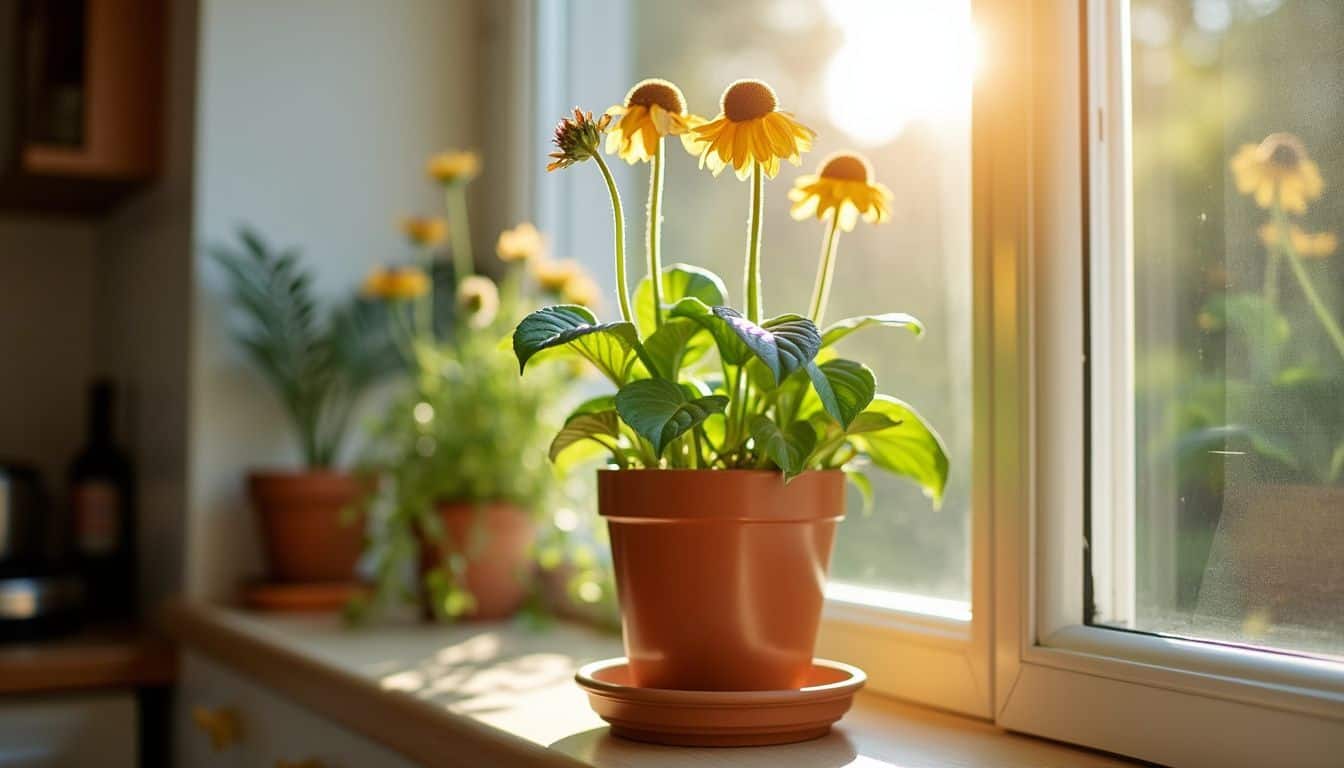Are your flowers wilting faster than you can say “photosynthesis”? You’re not alone. How often should flowers be watered is a question that stumps many green thumbs. Did you know that overwatering kills more plants than underwatering? Yikes! Don’t worry – we’ve got your back with six thirst-quenching tips to keep your blooms happy and healthy.
Ready to become a watering wizard?
Key Takeaways
Water needs vary based on factors like sunlight, temperature, soil type, and plant stage. Check soil moisture before watering.
Signs of improper watering include wilting, yellow leaves, slow growth, and droopy flowers. Aim for moist but not soggy soil.
Water deeply and less often to encourage strong root growth. Early morning (6-10 AM) is the best time to water flowers.
Use water-saving methods like mulching, drip irrigation, and rain barrels. Group thirsty plants together to conserve water.
Avoid common mistakes like overwatering, watering at the wrong time, ignoring drainage, and not adjusting for seasons.
Table of Contents
Essential Water Requirements for Flowers
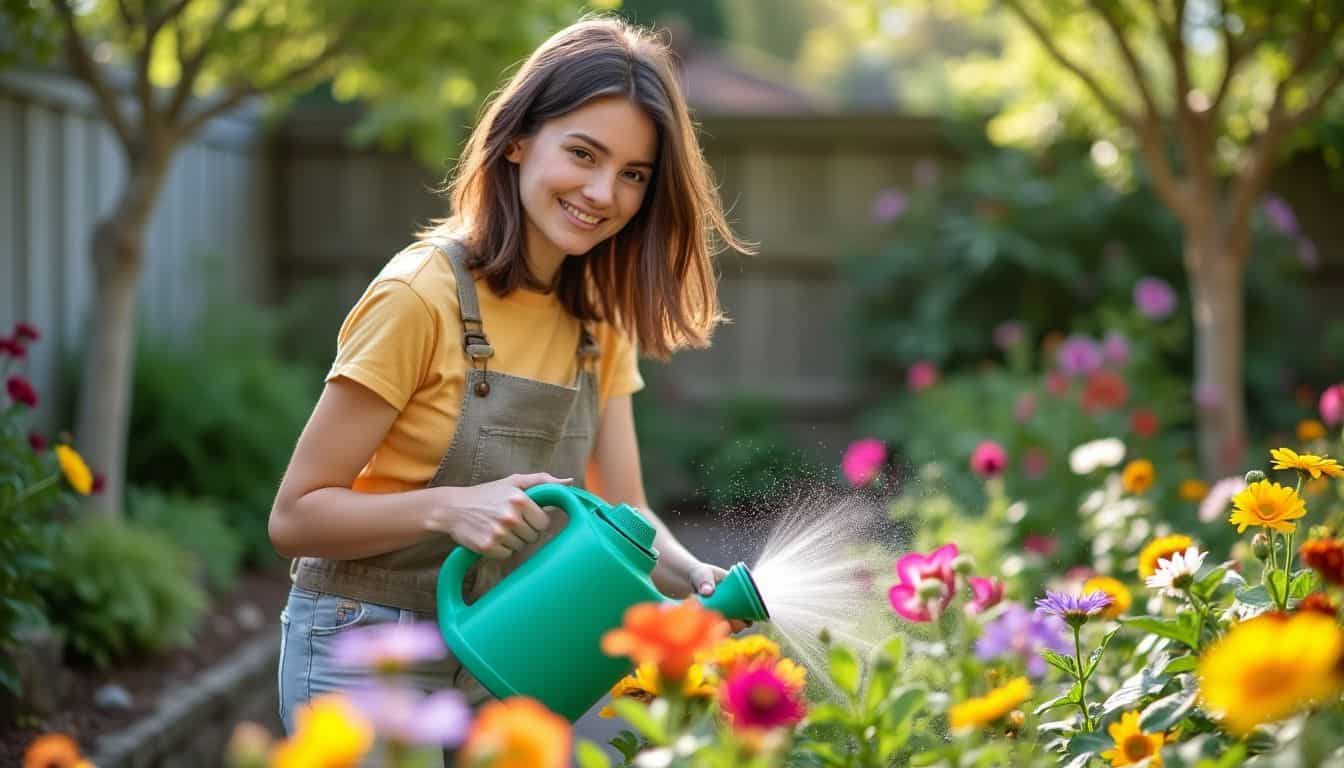
Flowers need water to thrive, but how much is just right? It’s a balancing act – too little, and they wilt; too much, and they drown. Let’s dig into what your blooms really need to stay perky and vibrant.
Key factors influencing water needs
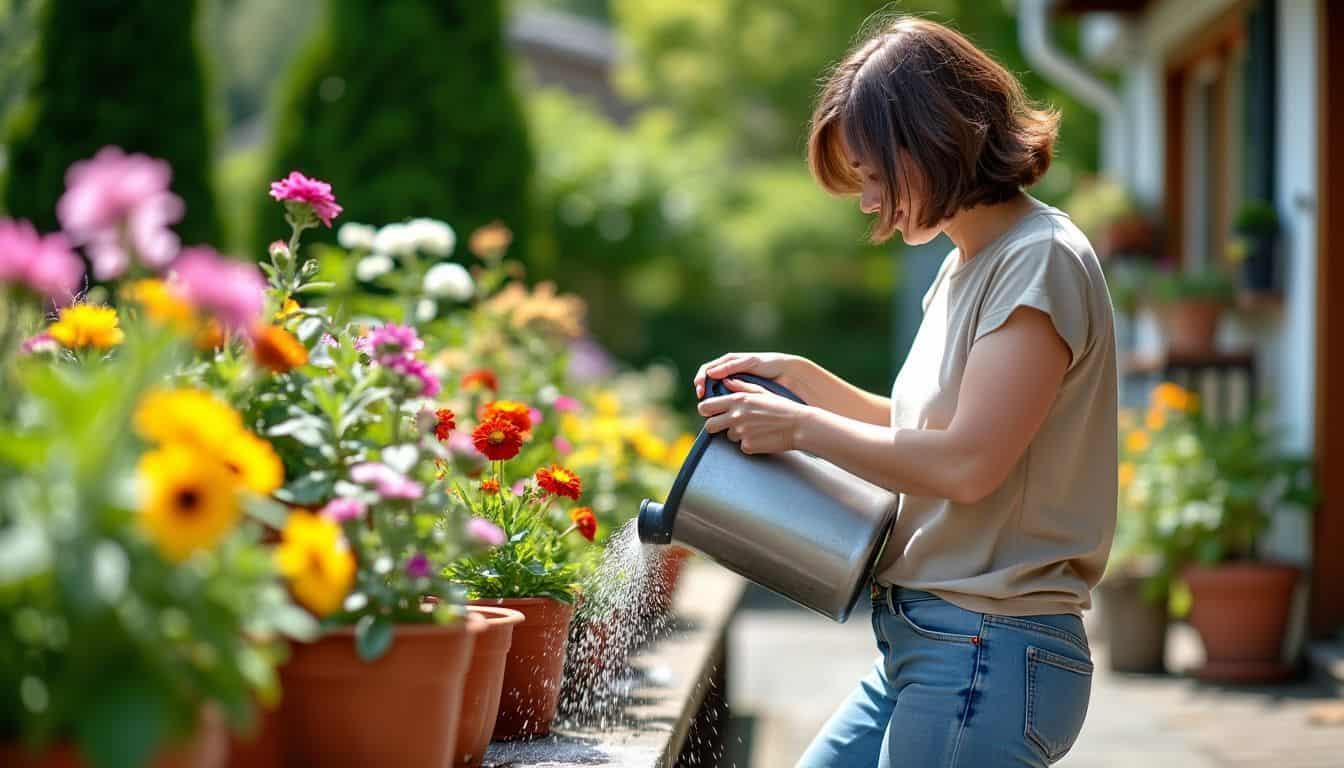
Several factors play a big role in how much water your flowers need. Sunlight, temperature, and humidity top the list. Hot, sunny days make flowers thirsty fast. Cool, cloudy weather means they need less water.
The types of soil matter too. Sandy soil drains quickly, while clay holds water longer. Your flower’s growth stage also affects its thirst. New plants often need more water than established ones.
Pot size and material impact watering needs for container flowers. Small pots dry out faster than large ones. Clay pots lose moisture quicker than plastic. The season matters too – summer heat means more frequent watering.
In winter, most flowers need less. Rainfall affects garden flowers, but potted plants still need your help. For both, proper drainage is key to avoid root rot. I’ve found that using water-saving garden tips like mulching can really cut down on how often you need to water.
Water is the driving force of all nature. – Leonardo da Vinci
Identifying signs of excessive or insufficient watering
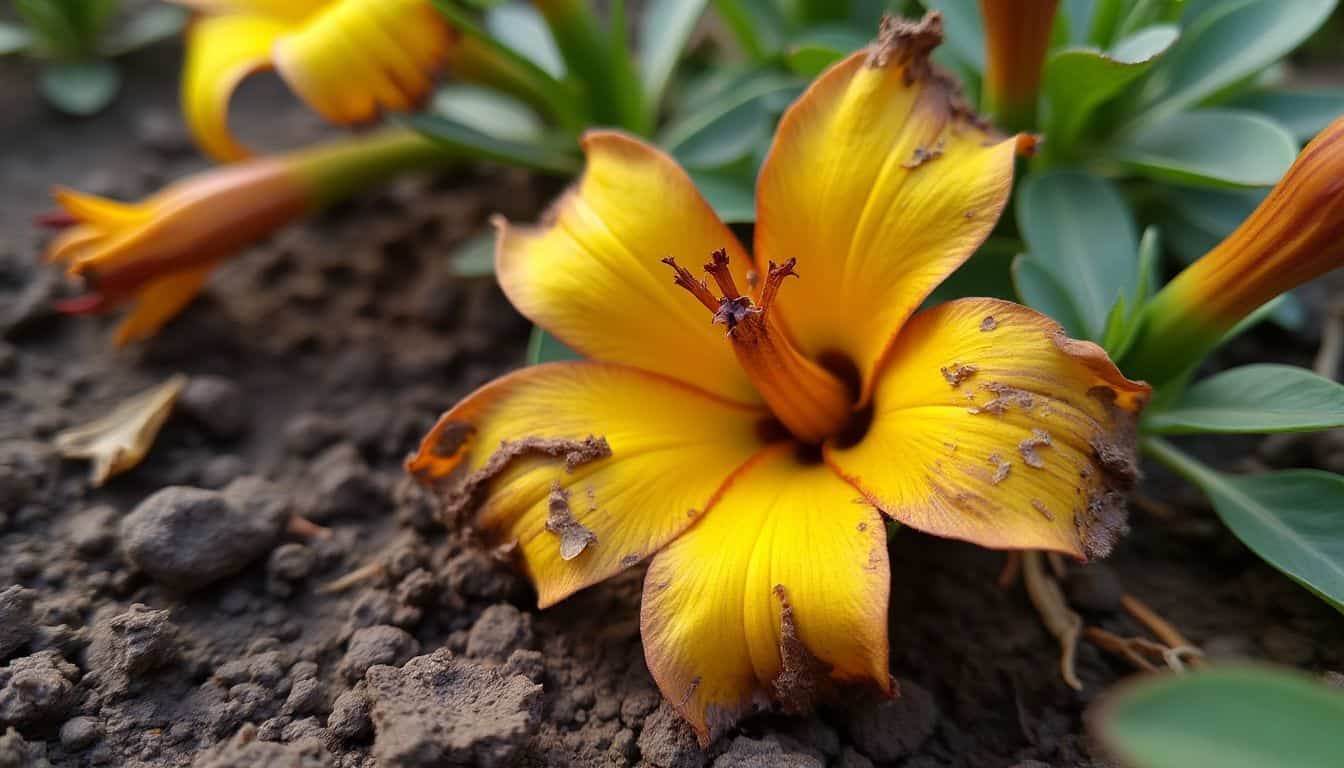
Flowers can be fussy about their water needs. Let’s dive into the telltale signs that your blooms are either drowning or parched:
- Wilting leaves: This classic sign can mean too much or too little water. Check the soil – if it’s dry, your plant’s thirsty. If it’s soggy, you’ve overdone it.
- Yellow leaves: When leaves turn yellow and fall off, it’s often a cry for help. Your flower might be gasping for air in waterlogged soil.
- Brown, crispy edges: These are a dead giveaway that your plant’s begging for a drink. It’s like chapped lips, but for flowers!
- Slow growth: If your plant seems stuck in time, not growing an inch, it might be water-stressed. Plants need the right amount of H2O to thrive.
- Mold on soil surface: Spot fuzzy stuff on top of the dirt? You’re probably overdoing the watering can routine.
- Droopy flowers: Blooms hanging their heads isn’t just sad – it’s a sign. They could be thirsty or drowning, so check that soil!
- Root rot: If roots are mushy and brown, you’ve gone overboard with watering. Healthy roots should be firm and light-colored.
- Leaf drop: When leaves start jumping ship for no reason, it’s often water-related. Too much or too little can cause this plant mutiny.
Effective Watering Techniques for Potted Flowers
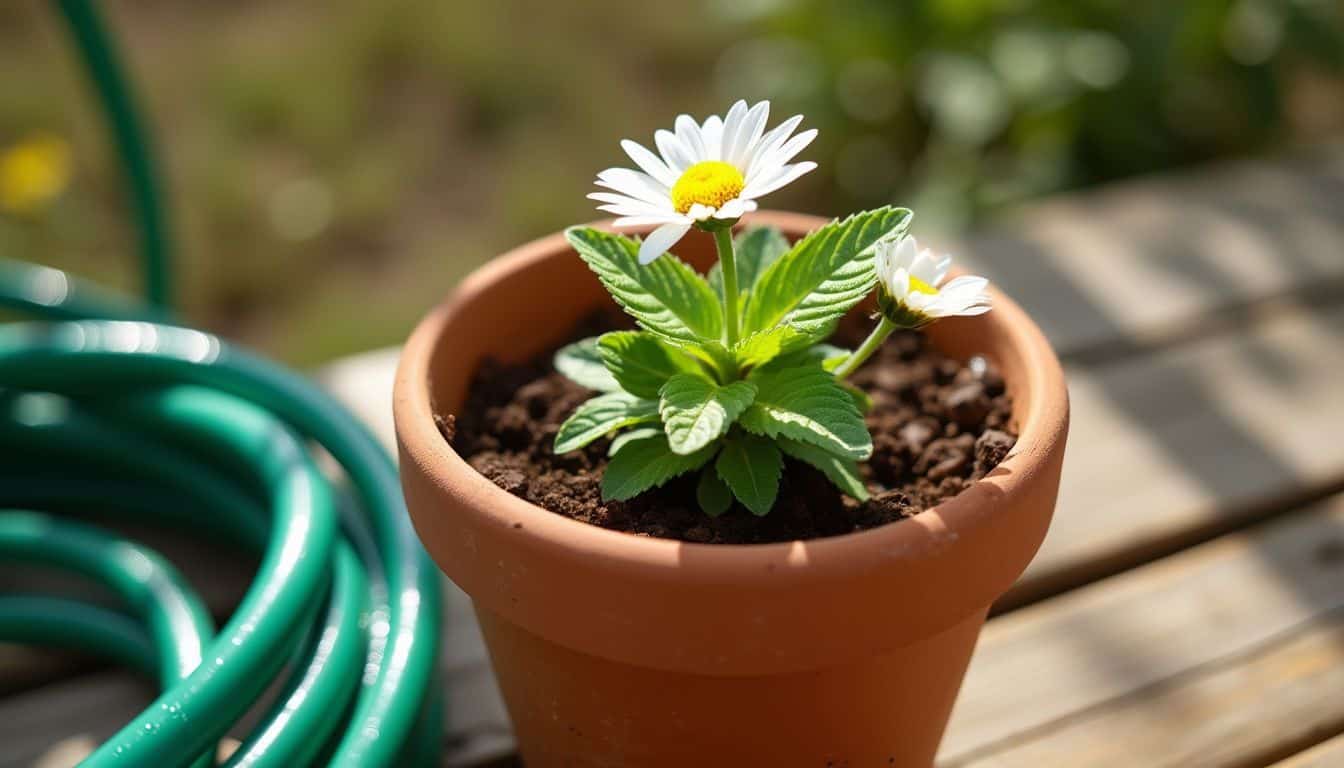
Potted flowers require careful attention to watering. Here are some smart ways to keep your flowerpots happy and thriving:
Watering potted flowers takes some know-how. Let’s look at a few clever tricks to help your container plants flourish.
Proper water volume for flower pots
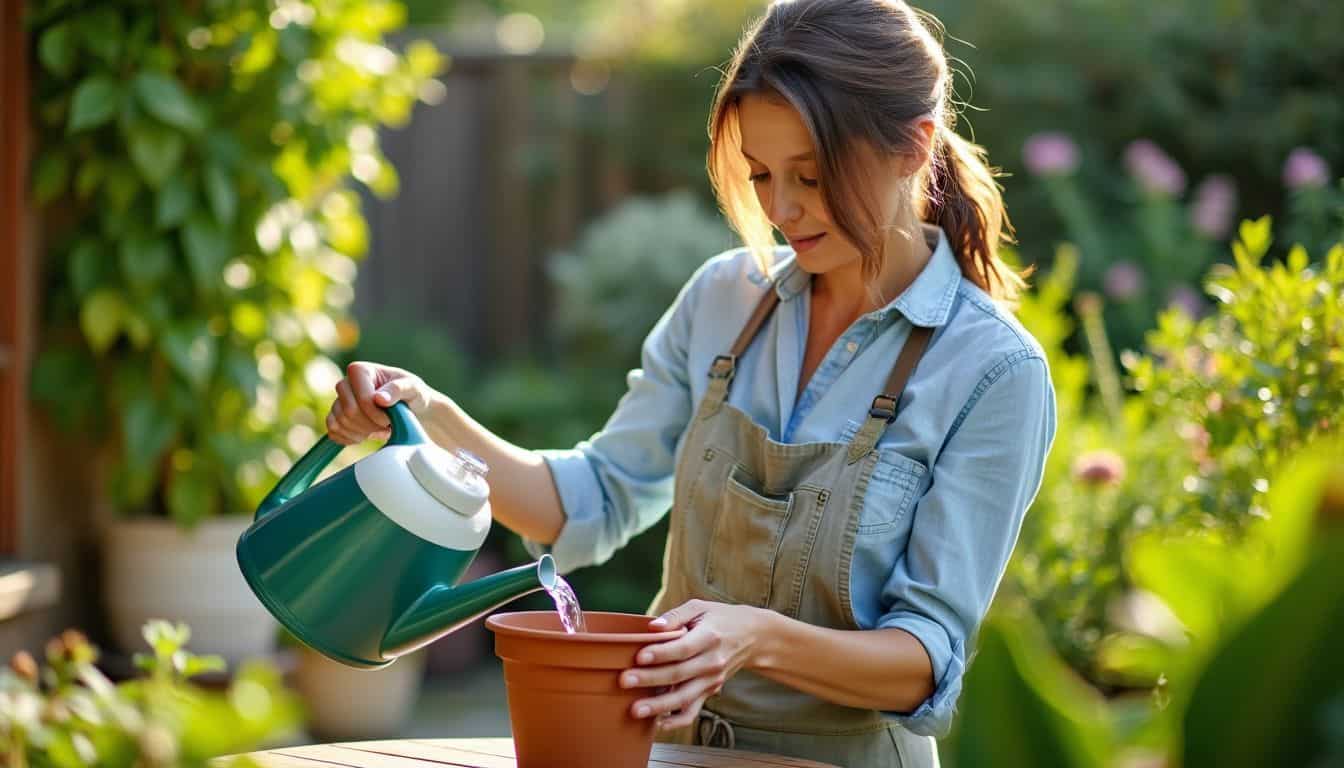
Flower pots need the right amount of water to keep your blooms happy. For a 10 to 12-inch pot, you’ll want to use about ¾ of a gallon of water. That might seem like a lot, but it’s just right to soak the soil fully.
Pour the water slowly until it starts to drain out the bottom. This helps the roots get all the moisture they need.
Bigger pots hold more water, so you won’t need to water them as often. If you’re setting up a window box, keep in mind it might dry out faster than larger containers.
The key is to check the soil before watering. Stick your finger about an inch deep – if it’s dry, it’s time to water. Different plants have different needs, so get to know your flowers’ thirst levels.
Water is the driving force of all nature. – Leonardo da Vinci
Timing your watering routine
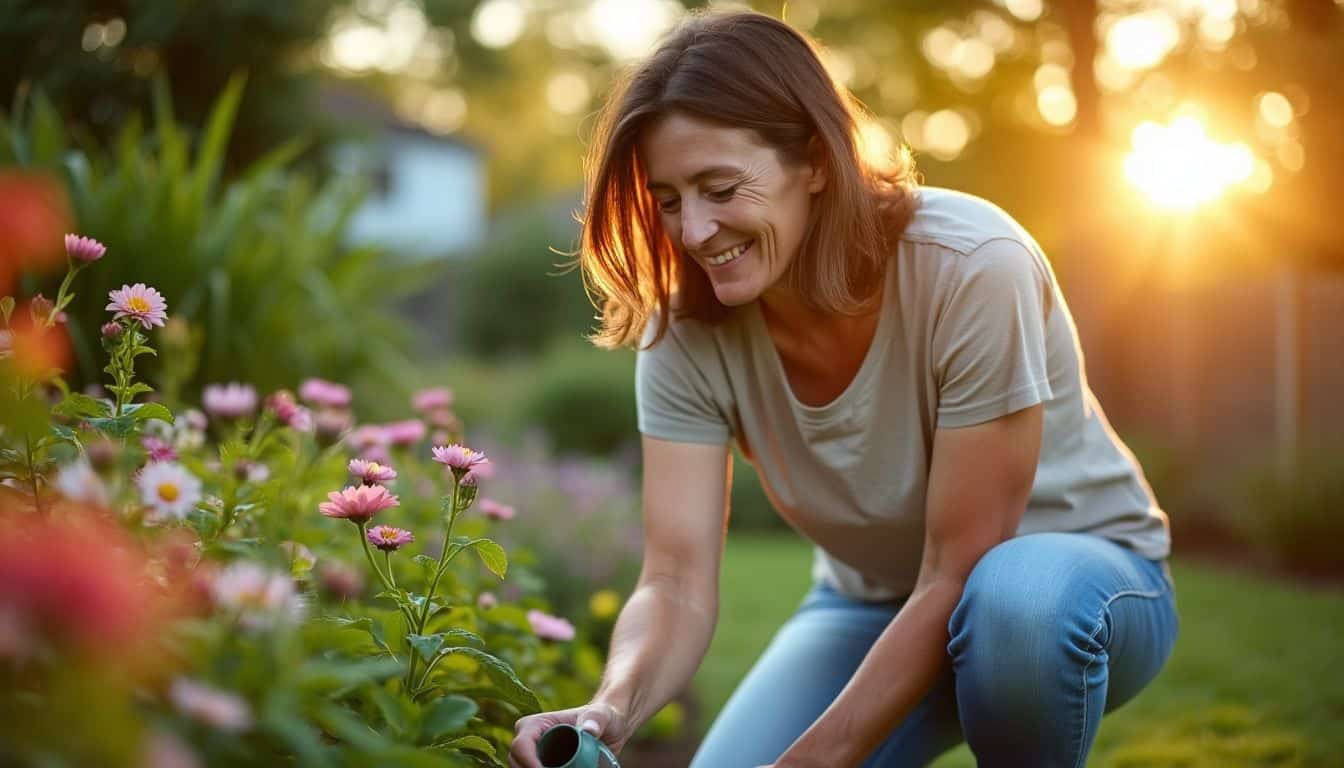
Now that you know how much water to use, let’s talk about when to water. Timing matters! The best time to water your flowers is early morning, between 6 AM and 10 AM. This gives plants time to drink up before the sun gets too hot.
It also reduces water waste from evaporation. If mornings don’t fit your schedule, late afternoon works too. Just avoid watering at night – wet leaves in the dark can cause fungus problems.
Your watering schedule depends on a few factors. Check the soil moisture with your finger. If it’s dry an inch down, it’s watering time. Hot, windy days mean more frequent watering.
Rainy weeks? You might skip a few days. Pay attention to your flowers – droopy leaves often signal thirst. With practice, you’ll understand your garden’s needs. Each type of flower has its own requirements.
Get to know your plants, and they’ll show you when they need water!
Watering Strategies for Garden Flower Beds
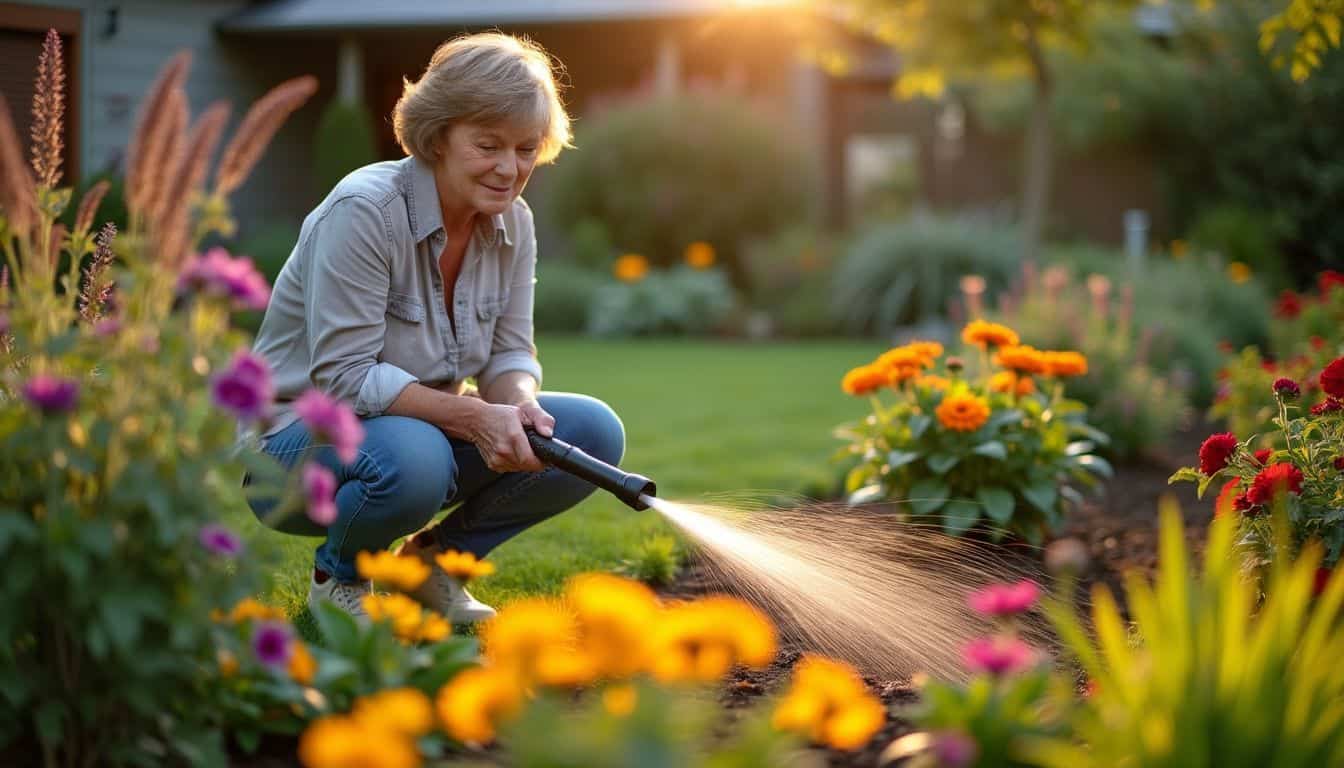
Garden flower beds need special care for watering. Use methods that get water right to the roots without waste. It’s best to water deeply and less often, encouraging roots to grow deeper and stronger. Drip irrigation or soaker hoses work well, delivering water directly to the soil. Early morning is ideal for watering – it gives plants time to absorb moisture before the heat of the day.
Mulching helps too, retaining moisture and reducing evaporation. Keep an eye on your plants, as different flowers have varying water needs. With a bit of attention, you’ll have thriving, beautiful flower beds all season long.
Recommended watering methods for in-ground flowers
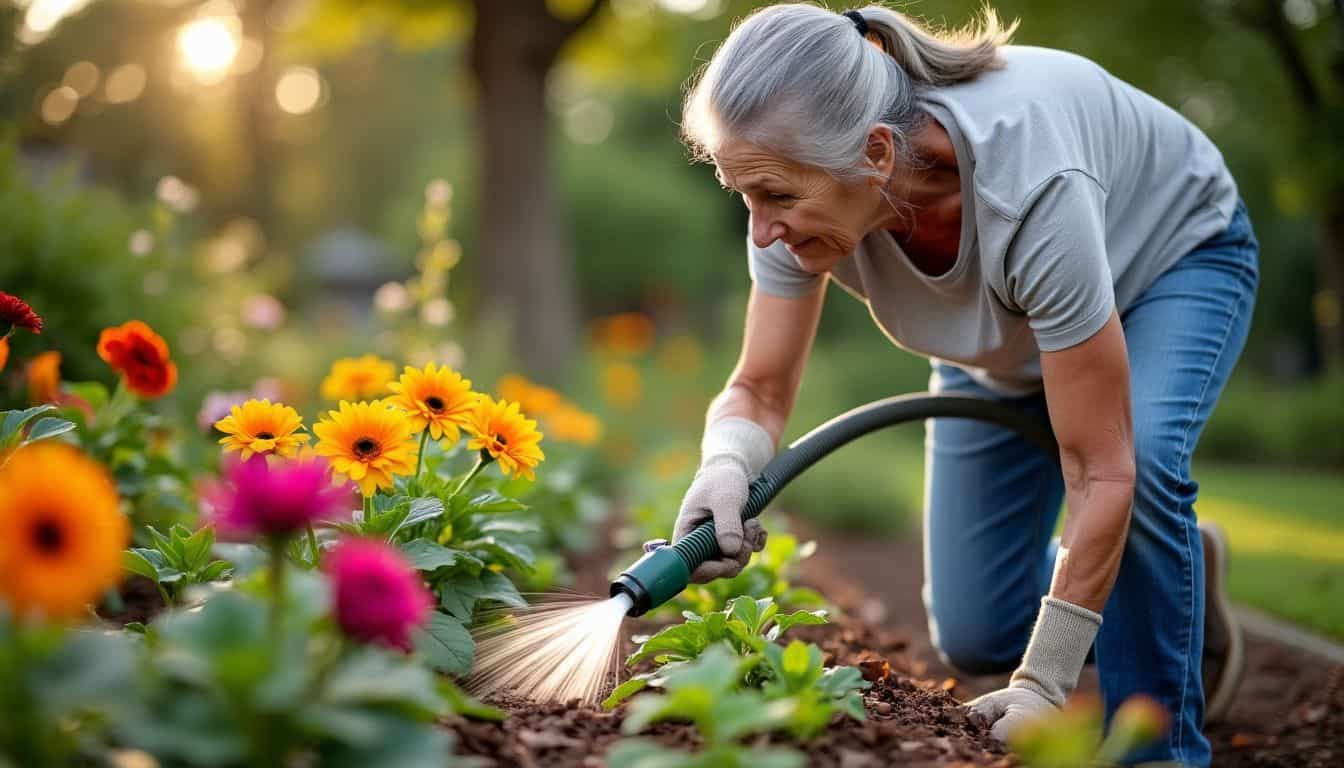
In-ground flowers need about an inch of water each week to thrive. Soaker hoses or drip irrigation work great for this job. They deliver water right to the roots, cutting down on waste.
Plus, they keep leaves dry, which helps stop plant diseases. For best results, water early in the morning. This gives plants time to soak up the moisture before the sun gets too hot.
Mulch is your secret weapon for happy flowers. A layer of bark mulch or compost around your plants holds in water. It also keeps the soil cool and blocks weeds. With mulch, you won’t need to water as often.
Just stick your finger about two inches into the soil. If it feels dry, it’s time to water. A soil moisture meter can help too if you’re not sure.
Adjusting watering frequency based on soil types
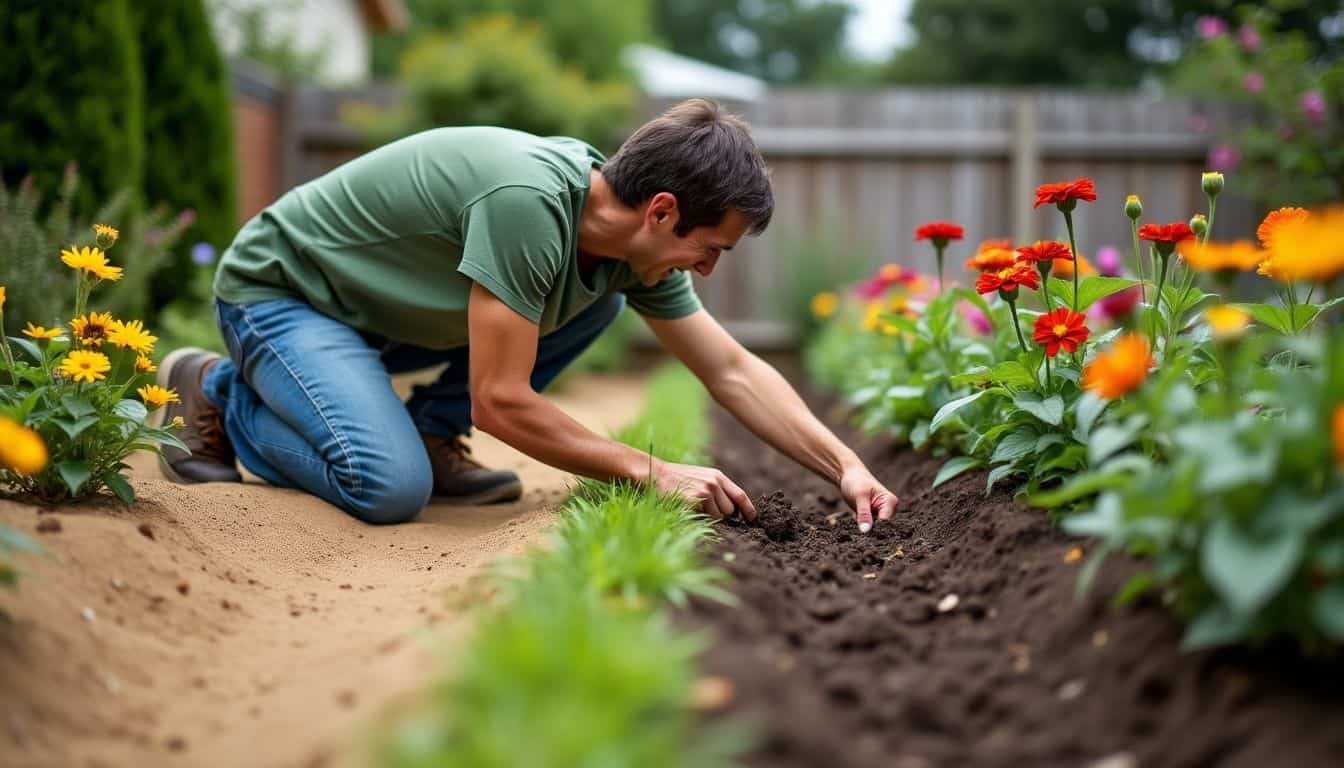
Soil type plays a big role in how often you water your flowers. Sandy soil drains fast, so it needs water more often. You might need to water twice a week. Clay soil holds water longer, so once a week might be enough.
Keep an eye on your soil’s moisture level. Stick your finger about an inch deep – if it’s dry, it’s time to water.
Weather matters too. Hot, windy days dry out soil faster. You’ll need to water more often then. Rainy days? Skip watering. Let nature do the work. The key is to be flexible. Your flowers will tell you what they need.
Droopy leaves mean they’re thirsty. Yellowing leaves might mean too much water. Listen to your plants, and they’ll bloom beautifully.
Strategies for Conserving Water in Flower Care
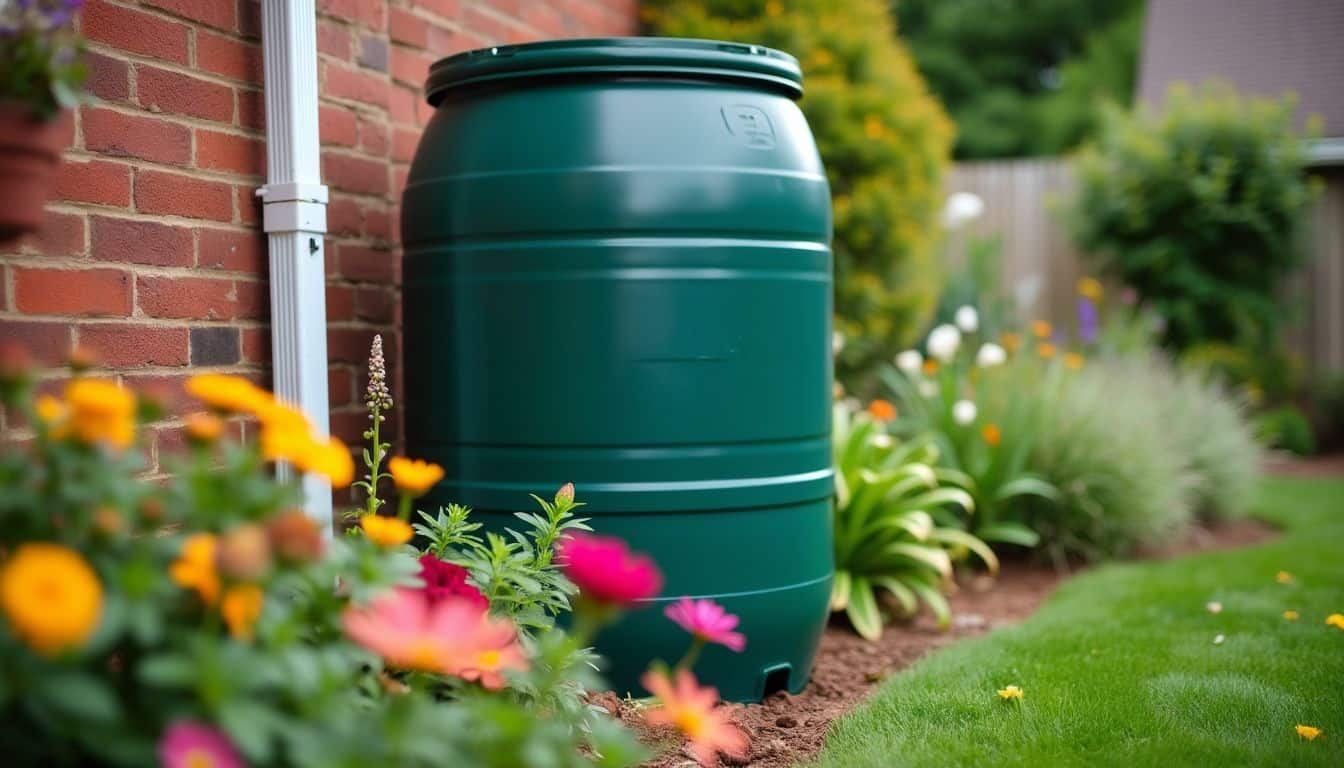
Saving water while caring for flowers isn’t just good for your wallet—it’s great for the planet too. Let’s dive into some smart tricks that’ll keep your blooms happy without wasting a drop… from clever gadgets to simple habits that make a big splash!
Techniques for minimizing water use
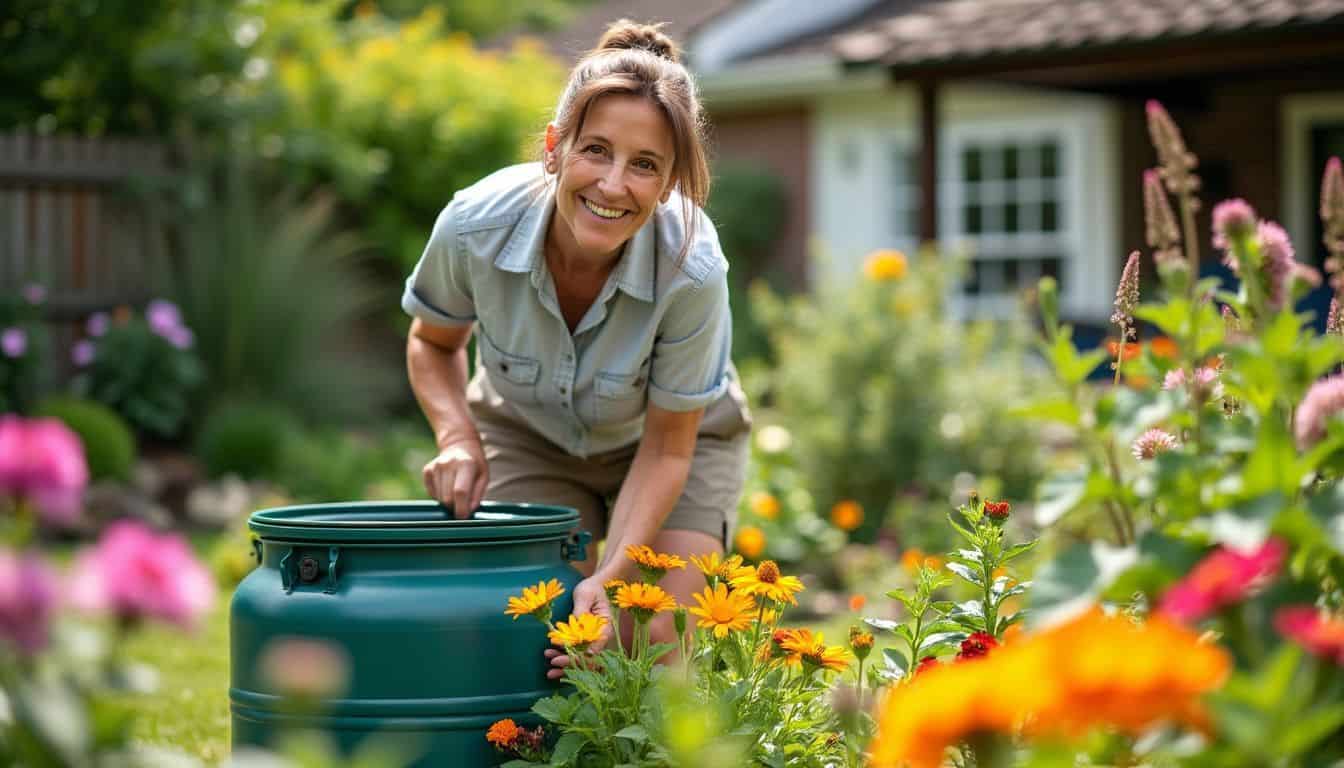
Saving water while caring for flowers is a win-win. You’ll cut costs and help the planet. Here are some smart ways to minimize water use:
- Mulch like a pro: Add a 2-3 inch layer of organic mulch around your flowers. This cuts water loss and keeps roots cool.
- Water deeply, less often: Give your flowers a good soak once or twice a week. It beats daily sprinkles and helps roots grow strong.
- Catch the rain: Set up rain barrels to collect free water. Your flowers will love this natural drink.
- Go low-flow: Install drip systems or soaker hoses. They put water right where it’s needed, cutting waste.
- Time it right: Water early in the day. Less water will evaporate, and your flowers get more to drink.
- Group thirsty plants: Put water-loving flowers together. This way, you’re not over-watering drought-tough plants.
- Check the forecast: Skip watering if rain is coming. Mother Nature’s got you covered.
- Use drought-resistant varieties: Try lavender or sedum. They need less water and still look great in your privacy garden.
Now, let’s look at some handy tools that can help you save even more water.
Tools that promote water efficiency
Now that we’ve covered ways to cut back on water use, let’s talk about some nifty gadgets. These tools can help you water your flowers like a pro while saving every precious drop.
- Drip irrigation systems: These are game-changers for flower beds. They deliver water right to the roots, cutting waste by up to 50%. Plus, they’re a breeze to set up!
- Moisture meters: Stick these in the soil and say goodbye to guesswork. They tell you exactly when your flowers need a drink, so you don’t over or under water.
- Rain barrels: Catch that free water from the sky! Hook one up to your gutters, and you’ll have a ready supply for dry spells. It’s like giving Mother Nature a high-five.
- Soaker hoses: These are like magic wands for your garden. Lay them along your flower beds, and they’ll slowly seep water into the soil. No more wasted sprays!
- Smart sprinkler controllers: These brainy devices check the weather and adjust watering schedules. They’re like having a mini meteorologist in your garden.
- Self-watering pots: Perfect for busy gals or forgetful types. These pots have a water reservoir that keeps your flowers happy, even if you skip town for a few days.
- Mulch: Okay, not exactly a “tool,” but it’s a water-saving superhero. A layer of mulch keeps moisture in the soil and cuts down on how often you need to water.
Common Mistakes in Watering Flowers
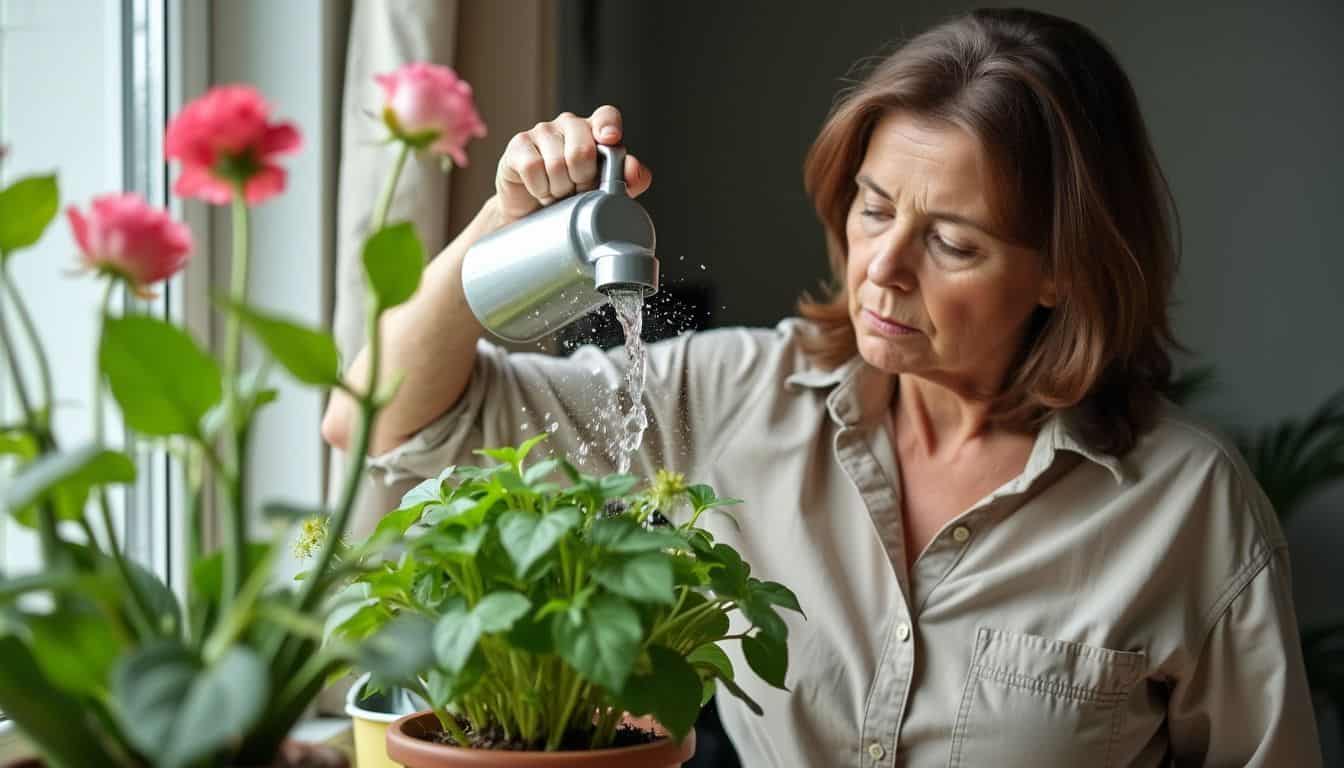
Watering flowers seems simple, but it’s easy to make mistakes. Let’s look at some common slip-ups that can harm your blooms:
- Overwatering: Many folks drown their flowers with too much love. This can rot roots and suffocate plants. Check the soil before you water – if it’s still damp, hold off.
- Watering at the wrong time: Splashing water on leaves during hot days can burn them. Stick to early mornings for the best results.
- Ignoring drainage: Flower pots need holes at the bottom. Without them, water pools and roots get soggy. Good drainage keeps your plants happy.
- Using the wrong water: Tap water can be harsh on some plants. Try rainwater or let tap water sit out overnight to remove chemicals.
- Inconsistent watering: Plants like routine. Watering on a whim stresses them out. Set a schedule and stick to it.
- Shallow watering: Quick sprinkles don’t cut it. Water deeply to encourage strong root growth. This helps plants survive dry spells better.
- Not adjusting for seasons: Plants need less water in winter and more in summer. Change your habits as the weather shifts.
- Forgetting about humidity: Some flowers love moist air. Mist them or use pebble trays to keep them perky.
People Also Ask
How often should I water my flowers?
It depends on the plant. Some need daily watering, others weekly. Check the soil. If it’s dry an inch down, it’s time to water. Morning watering is best for most plants.
What’s the deal with drainage holes in flower pots?
Drainage holes are crucial. They let excess water escape. Without them, roots can rot. Good drainage promotes healthy root development. It’s a must for happy plants.
Can you give me the scoop on potting mix?
Potting mix is key for container plants. It’s lighter than regular soil. It often contains peat, vermiculite, or coconut coir. These ingredients help with drainage and airflow. Your plants will thank you.
How do I water indoor plants versus outdoor ones?
Indoor plants usually need less water. They’re protected from the elements. Outdoor plants face wind and sun. They might need more frequent waterings. Use your finger to test soil moisture for both.
What about watering veggies like tomatoes and carrots?
Veggie crops have different needs. Tomatoes like deep, infrequent watering. Carrots prefer steady moisture. Potatoes need less water as they mature. Lettuce likes consistent dampness. Know your crop’s thirst level.
Are there any cool watering tricks for busy plant parents?
You bet! Try a plant watering system. It can be as simple as a water-filled bottle upside down in the soil. Or go high-tech with timed sprinklers. These gadgets are lifesavers when you’re out of town.
References
https://www.almanac.com/how-water-flowers-watering-tips
https://gilmour.com/watering-flowers-how-to
https://www.provenwinners.com/learn/water-your-way-happy-plants
https://www.ncbi.nlm.nih.gov/pmc/articles/PMC10497755/
https://bokashiliving.com/5-common-watering-mistakes-you-are-probably-making/
https://extension.illinois.edu/blogs/flowers-fruits-and-frass/2017-06-15-warm-days-and-thirsty-plants-art-watering (2017-06-15)
